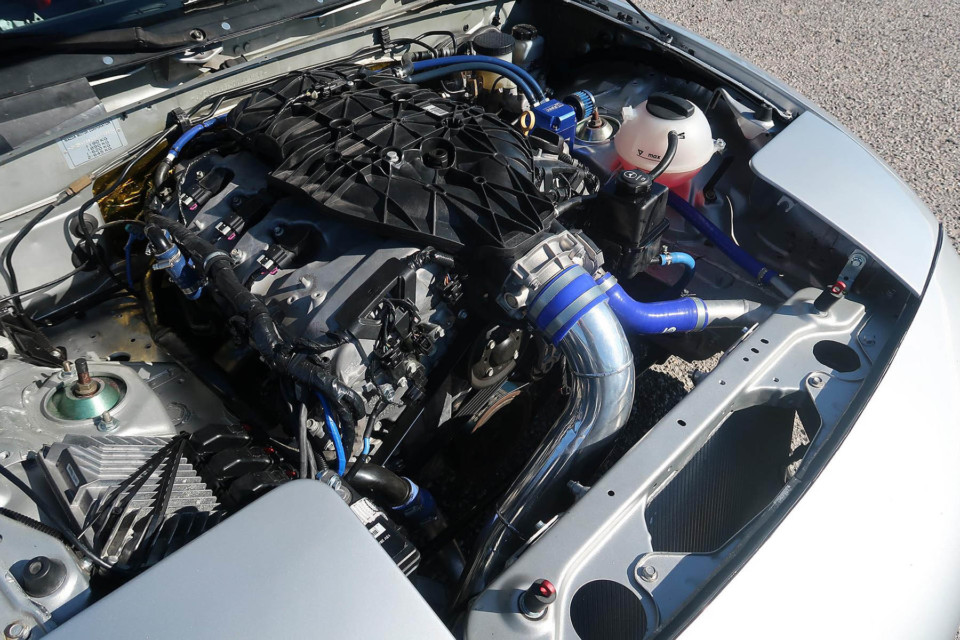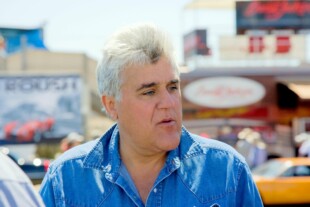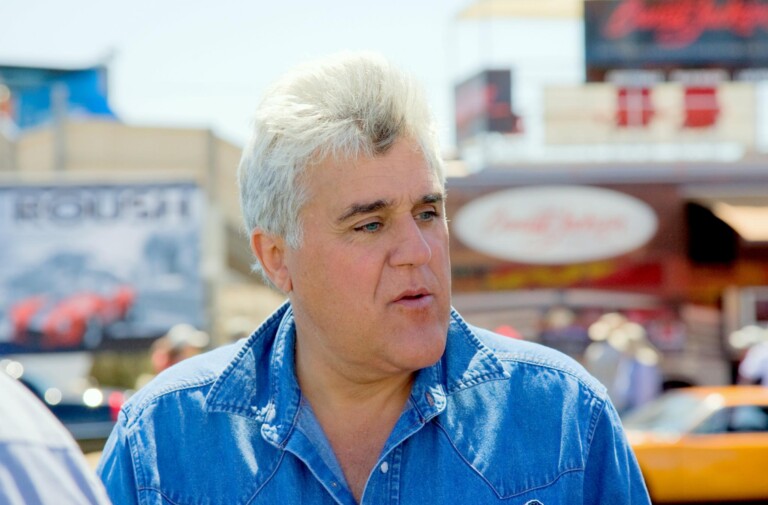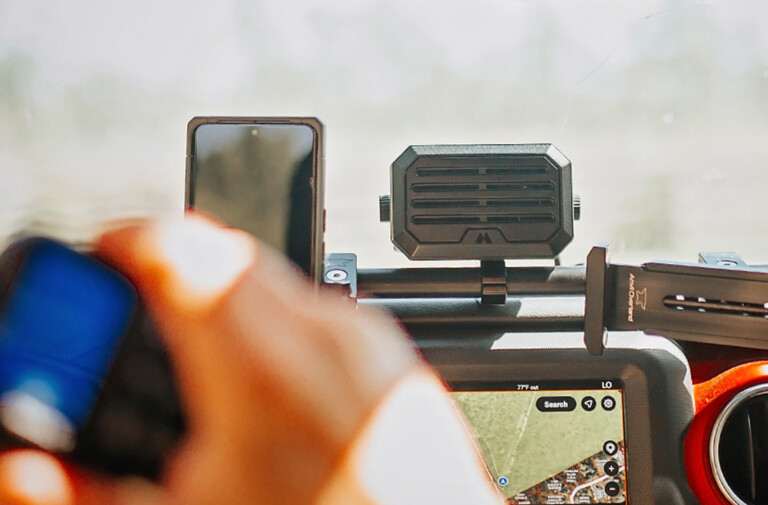The skilled, brave, and industrious men from One Lap Heroes are back at it again. Their exploits are well documented here, and now they’ve put on a battle to demonstrate the importance of a good setup for comfort around the 12.9-mile Nordschleife. Understanding the track means a great deal here, and does compliance, the right amount of power, and a chassis that is friendly enough to be pushed hard through its hardest sections. They’ve brought two of their fastest cars to duel at the legendary Green Hell — which would you put your money on?
Whether you vote for the 400-horsepower RX-7 or the lighter, less powerful, but more composed Miata, you made the right choice. Both have their strengths, and both run very similar times at the Nürburgring, which makes for a thrilling duel.
Turbocharged and Traction Limited
Even up against a V6-powered Miata, the RX-7’s straight-line advantage is real. Its 13B-REW is hardly touched; just a few cooling modifications and a large BorgWarner S300SX-E turbocharger. That simple combination is good for roughly 400 horsepower at the rear wheels, which it struggles to administer due to deficiencies in the footwork department.
Stock suspension, lowering springs, and stock wheels wrapped in 225-section semi-slick tires make putting that power to the ground a challenge, and Kostas, the brave man behind the wheel, has to plant his right foot carefully. That said, it has been able to outrun a V10-powered Audi R8 at a fast track like Spa-Francorchamps, so it’s capable in its current configuration.
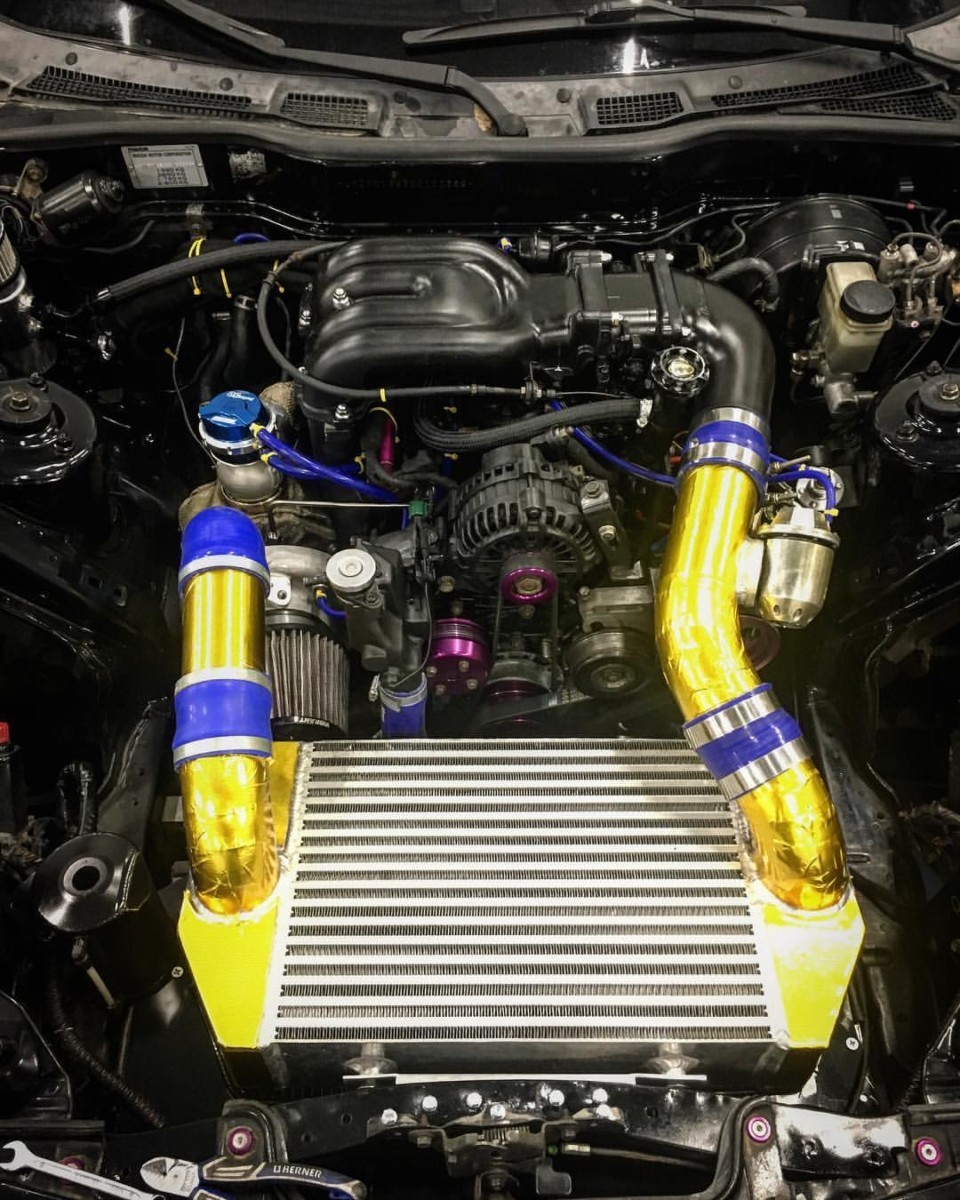
By switching from a front-mount to a V-mount intercooler setup, the 13B-REW could remain cool for as long as needed. Photo credit: @theringdorito
Fortunately, the RX-7 has perfect balance and natural poise, but it’s still not as well suited to cornering as the modified Miata. Meister-R ClubRace coilovers offer the right amount of suspension travel for the bumpy Nürburgring. With a little more tire, a big wing, and Stoptech brakes in front, this Miata has enough to outrun a 991 GT3 RS.
Less weight and better suspension setup are arguably its best strengths. Even so, it wouldn’t be able to keep a 400-horsepower RX-7 in its sights without a little more grunt. Rather than turbocharging the factory motor, Kostas (both drivers share the same name) chose a General Motors LFX: a 3.6-liter V6 with more than enough grunt to propel the 2,350-pound Miata.
Weighing just 370 pounds, the LFX doesn’t sour the Miata’s ideal weight distribution. With 323 hp at 6,800 rpm and 278 lb-ft of torque at 4,800 rpm, it provides a broad powerband and a linear curve — perfect for a car that has to deal with bumps and crests. There’s no denying the Miata is the quicker car over a lap, but the two are similar enough to demonstrate the differences in grip, power delivery, and braking performance.
Differentiating the Mazdas
From the start, there’s plenty to take in. The way the RX-7 breaks loose over crests (4:14) saps a little driver confidence, but not so much to keep him from carrying outrageous entry speeds through Flugplatz (4:21) and Schwedenkreuz (4:42). In these fast bends, there’s not a vast difference between the two cars.
However, when the brakes are involved, the Miata’s weight and its big Stoptechs make themselves known. Upon entering Aremberg (4:49), the RX-7 can’t stop and rotate as desired, and it runs wide as the Miata claws back a few meters. Not only is the Miata settled into the corner, but we can witness how little steering lock the Miata requires post-apex. Without a doubt, putting the LFX’s power down is easier than with the peaky, laggy rotary, which makes the RX-7 dance — regardless of the speed (6:36)!
The stock suspension limits the RX-7 in direction changes and bump absorption, so it suffers slightly in the most technical sections. When the course straightens (even slightly), turbo power makes up for any lack of body control. When two enter the uphill straight after Ex-Muhle (6:41), the difference in punch is clear for anyone to see.
All is relatively calm until the two enter Eiskurve, where a snap of oversteer on entry slows the Miata. Meanwhile, the RX-7’s straighter line over the subsequent curb opens up another gap. In addition to more control, it seems the aftermarket suspension aids driver confidence, which builds consistency.
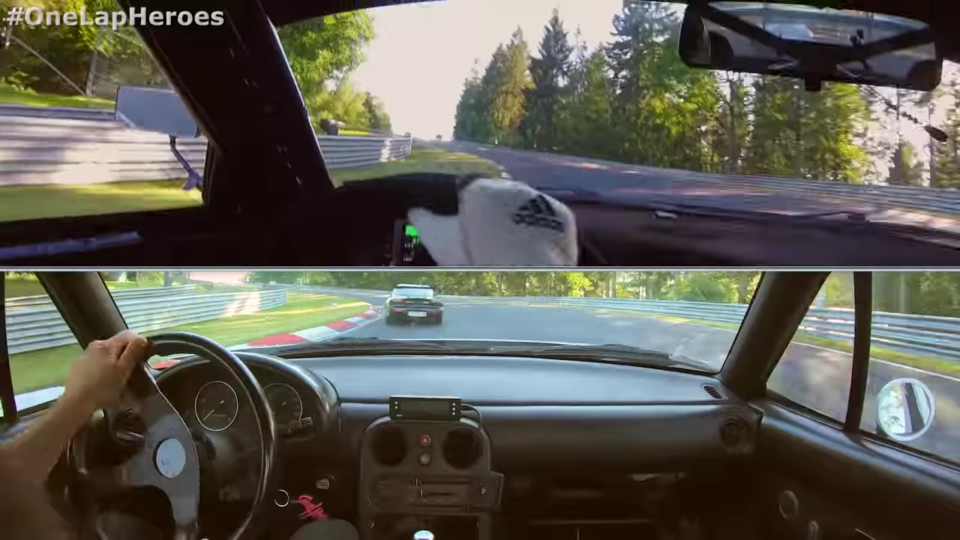
The one time the Miata loses the rear on entry, the RX-7 is able to eke out a gap — showing just how quick both cars are into the corner.
At that point, a GT3 RS enters the fray and shows us how quick one is in the hands of a genuinely talented driver. Since both of these guys put on an incredible show, it almost seems a shame the Porsche had to crash the party. Perhaps its a poetic message to the end of an astonishing duel in budget track cars. Even the six-digit Porsche took a while to get around them, after all.




